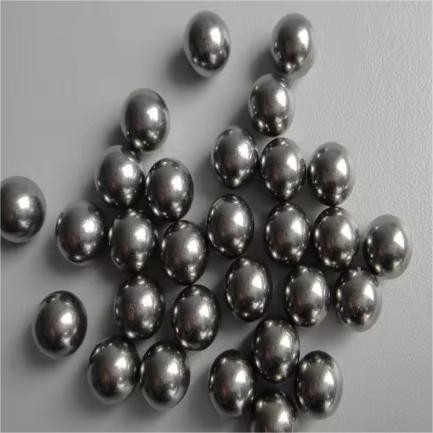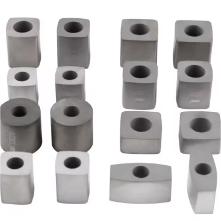Silver Plating Magic: Crafting Your Own Metal Masterpieces
(How To Make Metal Silver Plates)
Ever admired those beautiful silver trays or shiny decorative pieces? That stunning finish isn’t always solid silver. Often, it’s the magic of silver plating. This process coats a base metal with a thin, brilliant layer of real silver. It gives the luxurious look without the hefty price tag. Creating your own metal silver plates at home is surprisingly doable. It needs care and the right materials. Let’s dive into how you can transform ordinary metal into gleaming silver treasures.
**1. What Are Metal Silver Plates?**
Metal silver plates aren’t solid silver blocks. They start life as objects made from a different, cheaper metal. Copper, brass, or nickel silver are common choices. These base metals get a special treatment. A very thin coating of pure silver gets applied to their surface. This coating bonds tightly to the metal underneath. The result is an object that looks and feels like solid silver. It has that classic shine and elegance. But it costs much less. Think of it like giving metal a beautiful silver skin. This skin is what we call the silver plate. The item itself becomes a silver-plated object. Jewelry, cutlery, decorative boxes, and trophy cups often use this technique. It makes luxury accessible. You get the silver appearance without needing a mountain of cash.
**2. Why Plate Metal with Silver?**
Why go through the trouble? Why not just use the base metal? Silver plating solves several problems. First, pure silver is expensive. Plating uses only a tiny amount of silver. This makes beautiful items affordable for more people. Second, silver is gorgeous. It has a unique, bright white shine. Many base metals lack this brilliance. Copper is reddish. Brass is yellowish. Silver plating gives them that desirable, cool metallic luster. Third, silver offers good protection. It resists tarnish better than metals like copper or brass. While silver itself can tarnish, it tarnishes slower than many alternatives. A plated layer shields the base metal underneath from air and moisture. This helps prevent corrosion. Fourth, silver is versatile. It works for countless items, big and small. You can plate intricate details smoothly. Finally, plating allows for repair. Worn silver plating can often be stripped and reapplied. This restores an item’s beauty. It’s a practical, beautiful solution.
**3. How To Make Metal Silver Plates: A Step-by-Step Guide**
Creating silver plates involves electroplating. This uses electricity to stick silver onto your object. It needs preparation and safety gear. Always wear gloves and eye protection. Work in a well-ventilated area. Here’s the basic process:
* **Clean the Metal Thoroughly:** Any grease, dirt, or oxide ruins plating. Scrub the object with fine steel wool or a special metal cleaner. Rinse well with water. Then, degrease using a solution like acetone or a strong detergent. Rinse again. Finally, dip the piece in an acid bath (like diluted sulfuric acid) for a few seconds. This removes the last traces of oxide. Rinse extremely well. The metal must be perfectly clean and water must sheet off it evenly.
* **Prepare the Silver Plating Solution:** You need a special liquid called a silver plating electrolyte. This contains dissolved silver ions. You can buy pre-made solutions. Follow the mixing instructions carefully. Pour it into a non-metallic container, like glass or plastic. It’s usually warm for best results.
* **Set Up the Electroplating Tank:** Attach a wire to your clean metal object. This wire connects to the NEGATIVE terminal of a low-voltage DC power supply (like a battery charger or rectifier). This object becomes the CATHODE. Find a pure silver anode. This could be a silver bar or sheet. Connect a wire from the anode to the POSITIVE terminal. The anode gets submerged in the electrolyte. Your object (cathode) also gets fully submerged, hanging without touching the anode or tank sides.
* **Start the Plating Process:** Turn on the power. Set the voltage low, usually between 0.5 to 3 volts. The current depends on your object’s surface area. Start low. You’ll see tiny bubbles forming on the cathode. Silver ions in the solution get pulled towards the negatively charged object. They deposit onto its surface, building the silver layer. The silver anode slowly dissolves, replenishing the silver ions.
* **Monitor and Adjust:** Watch the process. The plating should look smooth and even. If it looks rough or burnt, the current is too high. Turn it down. Plating time varies. A thin decorative layer might take minutes. A thicker, more durable plate could take an hour or more. Gently agitate the solution or move the object slightly for even coverage.
* **Rinse and Dry:** Once done, turn off the power. Carefully remove the object. Rinse it immediately under running water. Dry it completely with a clean, soft cloth. Avoid touching the fresh plate with bare fingers.
**4. Applications of Silver Plated Metal**
Silver plated metal is everywhere! Its beauty and affordability make it incredibly popular. Here are some key places you’ll find it:
* **Jewelry and Accessories:** Earrings, pendants, bracelets, cufflinks, and brooches often use silver plating. It provides the desired shine without the high cost of sterling silver. Fashion jewelry relies heavily on this.
* **Tableware and Cutlery:** Silver plated trays, tea sets, coffee pots, serving utensils, and flatware are classics. They grace dining tables for special occasions, offering elegance. Many heirloom pieces are silver plate.
* **Musical Instruments:** Flutes, piccolos, saxophones, and clarinets frequently feature silver-plated keys or bodies. The plating enhances appearance and can subtly affect sound quality.
* **Decorative Objects:** Picture frames, candlesticks, trophy cups, figurines, and decorative boxes benefit from silver plating. It adds a touch of sophistication and luxury to any room.
* **Electrical Contacts:** Silver’s excellent conductivity makes it valuable in electronics. Plating is used on connectors, switches, and relay contacts to ensure good electrical flow and reduce corrosion.
* **Industrial Components:** Bearings and other parts needing low friction and corrosion resistance sometimes get a silver plating. It’s also used for specialized heat transfer applications.
* **Automotive:** Some high-end car manufacturers use silver plating for decorative trim elements or specific engine components.
**5. Silver Plating FAQs**
DIY plating sparks questions. Here are answers to common ones:
1. **Can I plate any metal?** Mostly, yes. Copper and brass plate very easily. Nickel silver (an alloy) plates well. Steel and iron can be plated but need special preparation steps like a copper or nickel strike layer first. Aluminum is tricky and usually avoided for DIY.
2. **How thick is the silver layer?** Thickness varies. Decorative plating might be only 0.00005 inches thick. Heavier wear items like cutlery might be 0.0002 inches or more. Commercial plating thickness is often measured in microns (millionths of a meter).
3. **Will it tarnish?** Yes, silver tarnishes when exposed to sulfur in the air, forming silver sulfide (black). Plated items tarnish just like solid silver. Regular polishing or anti-tarnish storage helps. The base metal doesn’t affect tarnishing; only the silver surface does.
4. **Can worn silver plating be fixed?** Often, yes. A professional can strip off the old, thin layer and re-plate the item. DIY re-plating is possible but requires completely stripping the old finish first, which can be challenging.
5. **Is it cheaper than solid silver?** Much cheaper! The cost is primarily the base metal plus a very small amount of silver. This makes large, impressive items affordable.
6. **Is DIY plating safe?** It involves chemicals and electricity. Safety is paramount. Wear gloves, eye protection, and an apron. Work in a ventilated area. Never eat or drink near your plating setup. Handle acids and plating solutions with extreme care. Read all safety data sheets (SDS) for chemicals used.
7. **What if my plating looks blotchy?** This usually means poor cleaning. Any grease or oxide left on the surface prevents the silver from sticking evenly. Strip the piece back to bare metal and clean it meticulously again.
(How To Make Metal Silver Plates)
8. **Can I use silver coins for the anode?** Older silver coins (like pre-1965 US dimes/quarters) are 90% silver and *can* work, but pure silver is better. Modern coins have little to no silver. Using pure silver ensures your electrolyte stays clean.
Inquiry us
if you want to want to know more, please feel free to contact us. (nanotrun@yahoo.com)


